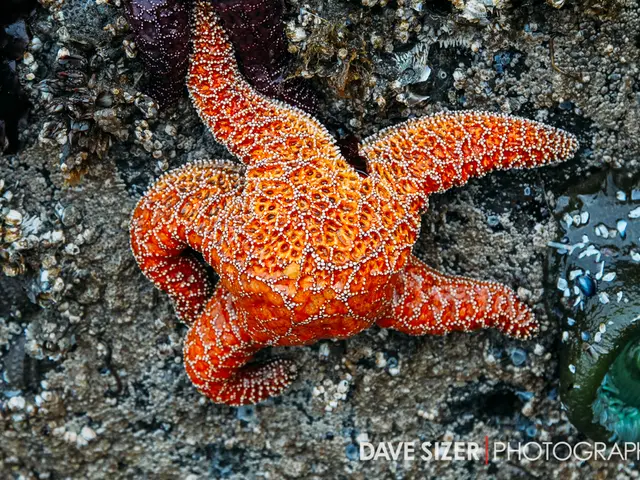Evolved fingers trace back to fish counterparts in the cloaca genetics
In a groundbreaking study published in the renowned scientific journal, Nature, a team of researchers from the University of Geneva have made significant strides in understanding the evolution of limbs in vertebrates. The focus of their research was on the regulatory areas of the genome, which control when and where genes become active, playing a crucial role in the development of these structures.
The researchers compared the genetic material of fish and mice, with the aim of identifying the genes responsible for the development of fingers. This comparative approach allowed them to pinpoint a key regulatory area in mice that is essential for the development of fingers.
With the help of CRISPR/Cas9 gene scissors, the researchers specifically switched off this region in fish. An intriguing outcome of this intervention was the elimination of gene activity in the cloaca, a common body opening found in many fish species.
This discovery could provide new insights into the evolution of limbs in vertebrates. One long-held assumption about the evolution of limbs is that they had developed from the fins of fish. However, this study adds another piece to the puzzle, shedding light on the complex genetic mechanisms that might have driven this transformation.
The evolution of feet and hands in vertebrate species occurred approximately 380 million years ago, making it a fascinating topic for scientific exploration. The findings from this study could potentially open up new avenues for research, contributing to a deeper understanding of our own evolutionary history.
It's important to note that no relevant information about the individual researchers or their university affiliations studying the connection between fingers and cloaca in fish was found in the provided search results. Nonetheless, the significance of their work in the field of evolutionary biology cannot be overstated.
As the world continues to uncover the mysteries of our evolutionary past, studies like this one serve as a reminder of the incredible complexity and intrigue that lies within the genetic makeup of all living organisms. The journey of understanding our origins is far from over, but with each new discovery, we move one step closer to unlocking the secrets of life itself.
Read also:
- Parliamentary Meetings in the Federal Diet of Germany this Week
- A Meniscus Tear refers to a common knee injury that occurs when the meniscus, a crescent-shaped cartilage within the knee joint, becomes torn or damaged.
- Startupopportunities available at the European Health Congress; submissions accepted for potential collaborations
- Lockdowns fuel COVID-19 threat perception, according to recent research in the UK





